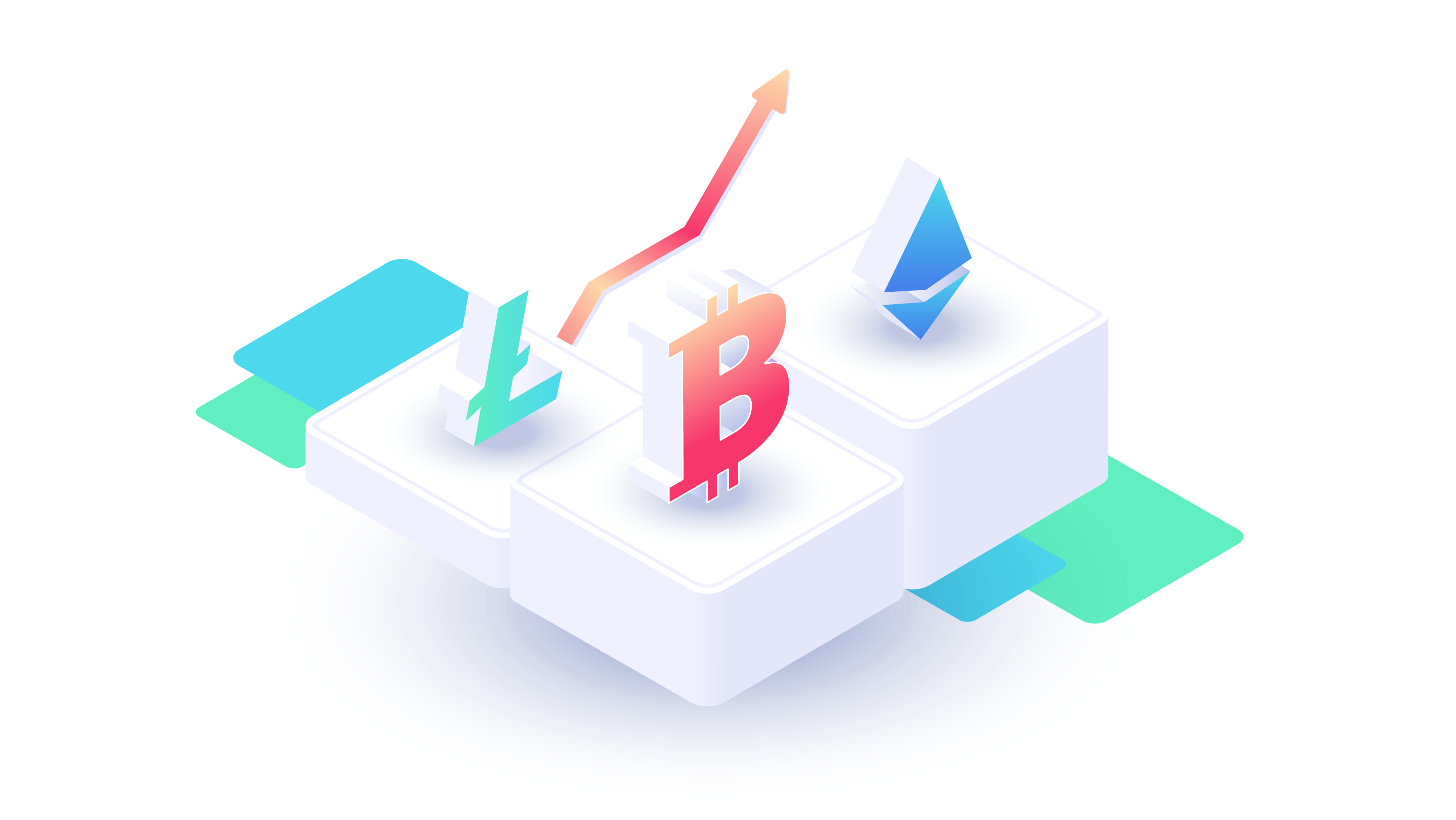What are Stablecoins? | Everything You Need to Know
AMAECHI AMARACHI
21 Mar 2022
•
7 min read
An Overview
Bitcoin remains the most popular cryptocurrency, but it tends to suffer from high volatility in its value. For instance, the value of bitcoin last year in January was around $9,545, rising to around $58,734 in March 2021.
This kind of volatility makes bitcoin and other cryptocurrencies unsuitable for everyday use. Speculation on cryptocurrency can also fuel its volatility which in the long run, hinders its real-world adoption. For example, in 2010, a teenager used 10,000 bitcoin to buy a couple of pizzas, which would be worth around $409,174,000 considering today’s value.
If 1 Bitcoin can be used to buy 10 pizzas today, and by tomorrow, you can get between one to 100 pizzas, then it cannot be used for everyday transactions due to its risks to vendors and merchants. That is where, to aid in financial services, stable coins come into the picture.
Let’s see in detail what stablecoins are.
What is a Stablecoin?
A Stablecoin is a digital asset where its value is pegged to another digital asset, e.g the US dollars, gold, etc. Stablecoins is built to offer more stability than other cryptos. The majority of the stablecoins that currently exist use the dollar as the benchmark asset, while others are also pegged to other fiat currencies such as the euro and yen.
As a result, the price of stablecoins fluctuates very little unlike other high-profile cryptocurrencies such as bitcoin and ethereum that are prone to ups and downs. Some of the top stablecoins include USD Coin (USDC), DAI (DAI), Tether (USDT), Binance USD (BUSD), and Paxos Standard (PAX).
Now that you know what a stablecoin is, let’s see how do stablecoins work!
How Do Stablecoins Work?
Unlike cryptocurrencies, stablecoins maintain a fixed value. There is a set of mechanisms included in every stablecoin and they work and behave almost the same way. Stablecoins work by bridging the gap between fiat currencies and cryptocurrencies. They maintain collateralized assets and manage the supply.
Types of Stablecoins
Fiat-backed stablecoins
The most common type of stablecoins is backed by fiat currencies like USD, EUR, YEN, or GBP. They are backed at a 1:1 ratio meaning 1 stable coin is equivalent to 1 unit of other fiat currency like USD. This means that for every stablecoin in existence, there is real fiat currency being held in a bank to back it up.
As long as the economy of the country a stablecoin is pegged to stays stable, the value of the stablecoin will not fluctuate. This means that even if the entire cryptocurrency collapsed and the price of bitcoin goes down to $0, it would not affect a fiat-backed stablecoin.
The first stablecoin, created in 2014 was Tether. Tether(USDT), is also the most popular stable coin and is currently the third-largest cryptocurrency by market capitalization. The next largest stable coin backed by the U.S dollar is USDC. It was created in 2018 by Coinbase and Circle. Other fiat-backed stablecoins include TrueUSD (TUSD), Diem, Binance USD, Gemini Dollar (GUSD)
Crypto-backed stablecoins
These are stablecoins backed by another crypto asset. Because it is backed by other crypto assets that can be volatile, a crypto-backed stablecoin is overcollateralized to ensure stability. Crypto-backed stablecoins are more decentralized, secure, and completely transparent compared to fiat-backed stablecoin since they were conducted on the blockchain. This means that anyone can maintain the blockchain since it is not being controlled by any single person or entity.
The most popular and promising crypto-backed stablecoin is DAI, which was created by MakerDOA. Dai (or DAI) is a crypto-backed stablecoin that aims to keep its value as close to US dollar (USD) through an automated system of smart contracts that is run on the Ethereum blockchain.
Crypto-backed stablecoins are the most complex form of stablecoins, therefore they haven't gained as much traction compared to their fiat-backed counterpart.
Examples of other crypto-backed stablecoins include Havven and BitUSD.
Commodity-backed stablecoins
These stablecoins are backed by other kinds of interchangeable assets such as precious metals. The most common precious metals used are gold and oil. Holders of community-backed stablecoins hold a tangible asset that has real value. Something most cryptocurrencies don't have. These commodities even have the potential to appreciate in the long run, investors can buy and hold them for capital appreciation.
Some of the well-known commodity-backed stablecoins are Tether Gold and Paxos Gold.
Check the complete list of stablecoins below!
Stablecoins List
Below is the list of most popular stablecoins.
1. Diem
Previously known as Libra, Diem is a stablecoin that is yet to be launched. Although it’s in progress, it has already created an impact more than any other stablecoin.
2. Tether (USTD)
Tether is one of the most well-known stablecoins with a market cap of over $4 billion.
3. USD Coin
USD stablecoin is managed through the Centre Consortium by Circle and Coinbase. Founded in 2018, USD is a stablecoin pegged to the U.S. dollar with almost $26 billion circulating supply.
4. Dai
Launched in 2015, Dai stablecoin is also pegged to the U.S. dollar. A stablecoin on the ethereum blockchain, Dai is backed by the Ethereum token called ether and it runs on the MakerDAO protocol.
Stablecoin Usecases
Store of Value
Stablecoin has a value that is designed to be stable over time. This feature makes stablecoins an ideal way to store the value of assets because, unlike other cryptocurrencies that face price volatility due to speculations, an individual using a stablecoin to store its asset will see no loss.
Trading
Stabelcoins are high in liquidity and tradable, making them easy to exchange into other cryptocurrencies or fiat currencies for trading purposes. Stablecoins are a solution for traders who wants the ability to reduce crypto volatility without fully cashing out, e.g. Tether(USDT) is one of the largest stablecoins, it accounts for 40% of transactions on Binance.
Payments (including cross-border payments) & Remittance
Stablecoins are an essential component of the modern-day financial system. Without digital currencies, sending funds from one part of the world to another is slow and costly. But with stablecoins, funds can be transacted around the world at a far greater speed for a fraction of what it would have cost you when using the traditional payment system.
Faster payment processing and lower transaction fees make stablecoins like USDC and USDT a good choice for sending money anywhere in the world.
Stablecoins also have the potential to help millions of families who live and work in developing countries. In today's world, families abroad can send remittances to their loved ones without going through traditional services like Western Union and ending up losing a big chunk of their funds to high fees.
Payroll
By using stablecoins for payroll, organisations can hire from different parts of the world without worrying about the high international fee that would be paid to their workers.
Lending
Stablecoin lending is currently one of the most favorable opportunities for debt investors. Imagine lending out an asset ( 1 bitcoin) when the price was $50,000 and at the maturity date, the value of the asset is $30,000. You can see that this is not a good return on the lender. But using stablecoins, the value of the asset remains stable.
Benefits of Stablecoins
Stability
Stablecoins are stable because they are pegged to a fiat currency. The money you put into a stablecoin transfer, minus whatever fees you may incur, will be the amount your recipient gets.
Faster speed
Stablecoins make financial processes faster. Payment and remittance conducted with stablecoins can be done within a few seconds and operation is 24/7 because blockchain operates independently of a central institution with working hours. With stablecoin, users can send and receive money anywhere in the world in few seconds
Borderless
One of the benefits of stablecoins is that they are borderless. Irrespective of your location, stablecoins can be moved from one place to another without losing their value.
Flexibility
Businesses can send and receive international transfers almost instantly, provide payments to contractors both locally and overseas with ease and save a substantial amount of money in inter-bank transfer fees. It is also open to anyone on the internet 24/7, unlike the traditional financial system that operates with working hours.
Transparent
Transactions on blockchain can be viewed by anyone with internet access. Also, stablecoins offer transparency into their process which is backed by regular audits.
Lower fees
Processing fees across major companies such as Visa, MasterCard, and PayPal average about 7% per transaction. However, these high costs of the transaction can be avoided through the use of stablecoins. With stablecoins, people have sent as much as a million dollars worth of USDC with transfer fees of less than a dollar.
Programmable
Stablecoins are fundamentally made up of code, which means features can be added to them to improve and adapt them to changing needs.
Limitations
While stablecoins present many benefits, they also have their limitations.
Fiat-backed stablecoins are centralized
This means that they are run by a single entity and are also constrained by all the regulations that come with fiat currency. Fiat-backed stablecoins require trust from investors that this entity is actually backing up their stablecoins with real fiat.
Commodity-backed stablecoins take time to actualize
If you ever want to get the real bars of gold pegged to the commodity-backed asset, it could take months and an expensive trip to the vault before you can actually get a real bar of gold.
Crypto-backed stablecoins are vulnerable to price instability
Being pegged to other cryptocurrencies makes them much more vulnerable to price instability in comparison to fiat- or commodity-backed stablecoins. They are tied to a particular cryptocurrency (or combination of cryptocurrencies), which means if that crypto takes a deep nosedive, the stablecoin ultimately will as well.
Why have stablecoins become so popular?
Stablecoins are becoming popular every single day with a total market capitalization of $114.8 billion as of August 2021. Tether, for instance, is the second most traded cryptocurrency after Bitcoin with over $62 billion market capitalization (at the time of writing).
Stablecoins will bridge the gap between two worlds which are cryptocurrency and traditional finance. They also make it easier to move funds into crypto exchanges. Many exchanges don’t have the relationships with banks needed to offer regular currency deposits or withdrawals, but can and do accept stablecoins such as Tether or USDC.
The future of stablecoins
With the crypto boom of 2017 behind us, investors are increasingly looking to stablecoins as a safer way to experiment with the technology. In the first half of 2020, the supply of stablecoins swelled by 94% to hit $11 billion in June, and by July 2021, stablecoins capped at $108 billion.
While it is impossible to predict what the future has in store in the constantly changing world of blockchain, stablecoins could help bring cryptocurrencies as a whole to the mainstream.
Each type of stablecoins comes with its unique benefits and limitations, and none of them are perfect. Yet the value and stability they could provide to businesses and individuals globally such as enabling universal access to established national currencies, streamlining payments and remittances and supporting emerging financial applications — could be disruptive.
Thanks for reading! Sign up to Blockchain Works for more resources like these!
AMAECHI AMARACHI
👩🏽💻Front-End Engineer ✍🏽Technical Writer 🚀 Co-organiser @vuejsng
See other articles by AMAECHI
WorksHub
Jobs
Locations
Articles
Ground Floor, Verse Building, 18 Brunswick Place, London, N1 6DZ
108 E 16th Street, New York, NY 10003
Subscribe to our newsletter
Join over 111,000 others and get access to exclusive content, job opportunities and more!



